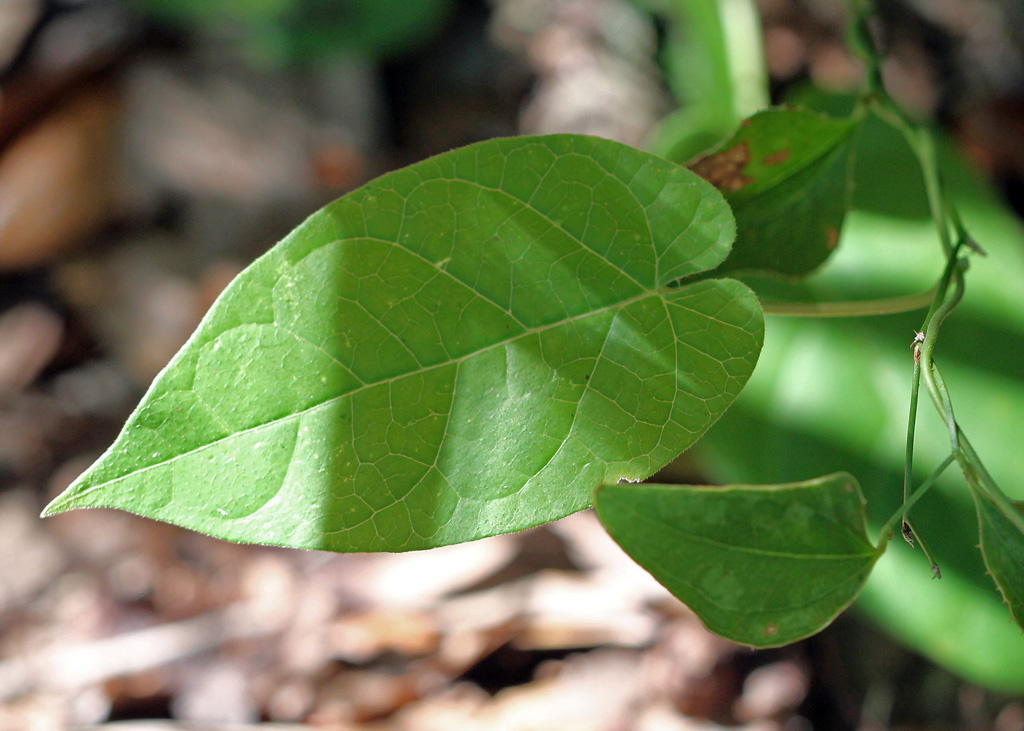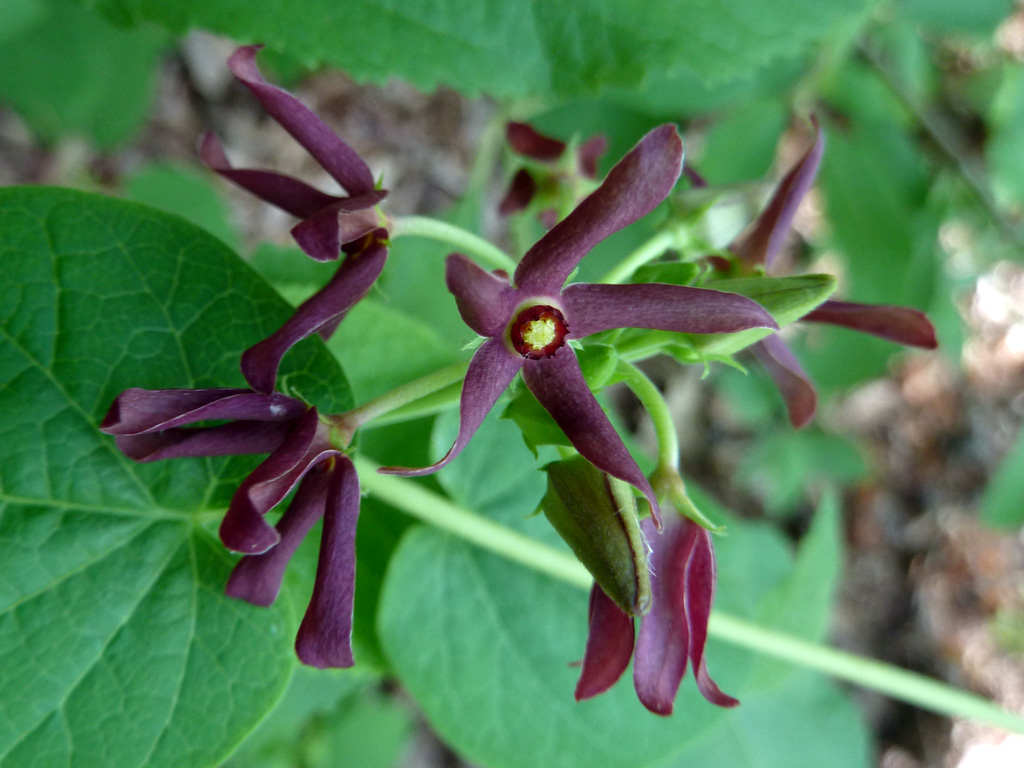Florida milkvine
Pictured above: Florida milkvine (Matelea floridana) by Eleanor Dietrich. Click on terms for botanical definitions. View post as a PDF.
Also known as Florida spiny pod, Florida milkvine (Matelea floridana) is a deciduous twining vine that occurs naturally in sandhills, woodlands and other open habitats. Its small flowers bloom in late spring and summer. They are pollinated mostly by beetles. The plant is a larval host for Monarch, Queen and Soldier butterflies and is a state-listed endangered species.

Flowers are small (less than ¾ inch long) with five burgundy to reddish-purple petals and a whitish ring in the center. Leaves are narrowly cordate and may be up to 4 inches long. They are oppositely arranged. Leaves and stems exude a white milky latex when crushed or injured. Seeds are born in elongated spiny follicles that dry and split open as the fruit matures. Each seed is attached to a white silky pappus that catches the wind and aids in dispersal.
Members of the Matelea genus are closely related to milkweed (Asclepias spp.).
Family: Apocynaceae (Dogbane family)
Native range: Primarily central Panhandle, North and Central Florida; also Miami-Dade
To see where natural populations of Matelea floridana have been vouchered, visit florida.plantatlas.usf.edu.
Hardiness: Zones 8–10
Lifespan: Perennial
Soil: Moist to dry well-drained soils
Exposure: Full sun to partial shade
Growth habit: 10+’ and sprawling
Propagation: Seed
Florida milkvine is generally not commercially available. Do not harvest wild plants or seeds or purchase them from someone who might have acquired them illicitly.

